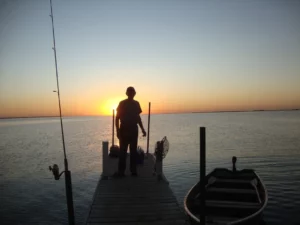Last November the U.S. FDA approved the production of the first genetically engineered animal for human consumption—salmon that some critics are calling “frankenfish”, citing health and environmental concerns.
The salmon, farmed in Panama after the eggs are fertilized in Prince Edward Island, Canada, contain a growth hormone-regulating gene from a Pacific Chinook salmon and some DNA from an ocean pout (an eel-like fish) added to an Atlantic salmon’s genes. These genes enable it to grow year-round instead of only during spring and summer, allowing it to grow twice as fast (getting to market size in 16 to 18 months rather than three years). The company behind the salmon, called AquaBounty, says their salmon poses no health risks and will be produced more sustainably than wild salmon and with a smaller carbon footprint.
The FDA describes its review of the genetically modified salmon, called AquAdvantage, as scientific and exhaustive, and says they as safe as “everyday” salmon (referring of course, to “other farmed salmon”.
But little is known about the health and safety testing AquaBounty submitted to the FDA, such as what the health effects might be for people who eat fish containing growth hormone. Worse still, we don’t know what might happen if genetically altered salmon escapes and the much bigger fish breed with natural wild salmon. One might imagine catching a 300lb. King salmon during your next fishing lodge vacation, but the cynic in me worries it’s not that simple. If the genetically altered fish were to make its way into rivers and oceans, it could outcompete the wild salmon, which is smaller, for food and breeding grounds.
AquaBounty says that the fish are sterile females, so breeding won’t be an issue (umm…ever seen Jurassic Park?). They insist that AquAdvantage salmon won’t be raised near a water source, so the fish won’t be able to escape. In addition, their fish will be housed in specially designed buildings that not only prevent escape but also control the water going in and out of the facility, enabling them to recycle 95 percent of the water used (hence the claimed environmental benefits—again, versus regular farmed salmon).
Now most of us who enjoy catching our own and would only eat wild salmon will never touch supermarket farmed salmon anyway, but many people won’t be able to avoid the AquAdvantage salmon even if they want to. AquaBounty won’t be required by the FDA to label the salmon as genetically altered.
At least Alaska senators have already introduced a bill that would require genetically altered salmon to be labeled as such, and the general public can submit a comment to the FDA regarding labeling the fish now. In addition, already many major food retailers, including Costco (the largest seller of salmon in the U.S.), Kroger, Target, Trader Joe’s, Safeway, and Whole Foods, have announced that they will not carry the modified salmon.
Basically, wild salmon is still the healthier choice, and catching them yourself—whether in Haida Gwaii or Kenai, is great for the soul. So don’t forget to book this season’s fishing lodge vacation!


